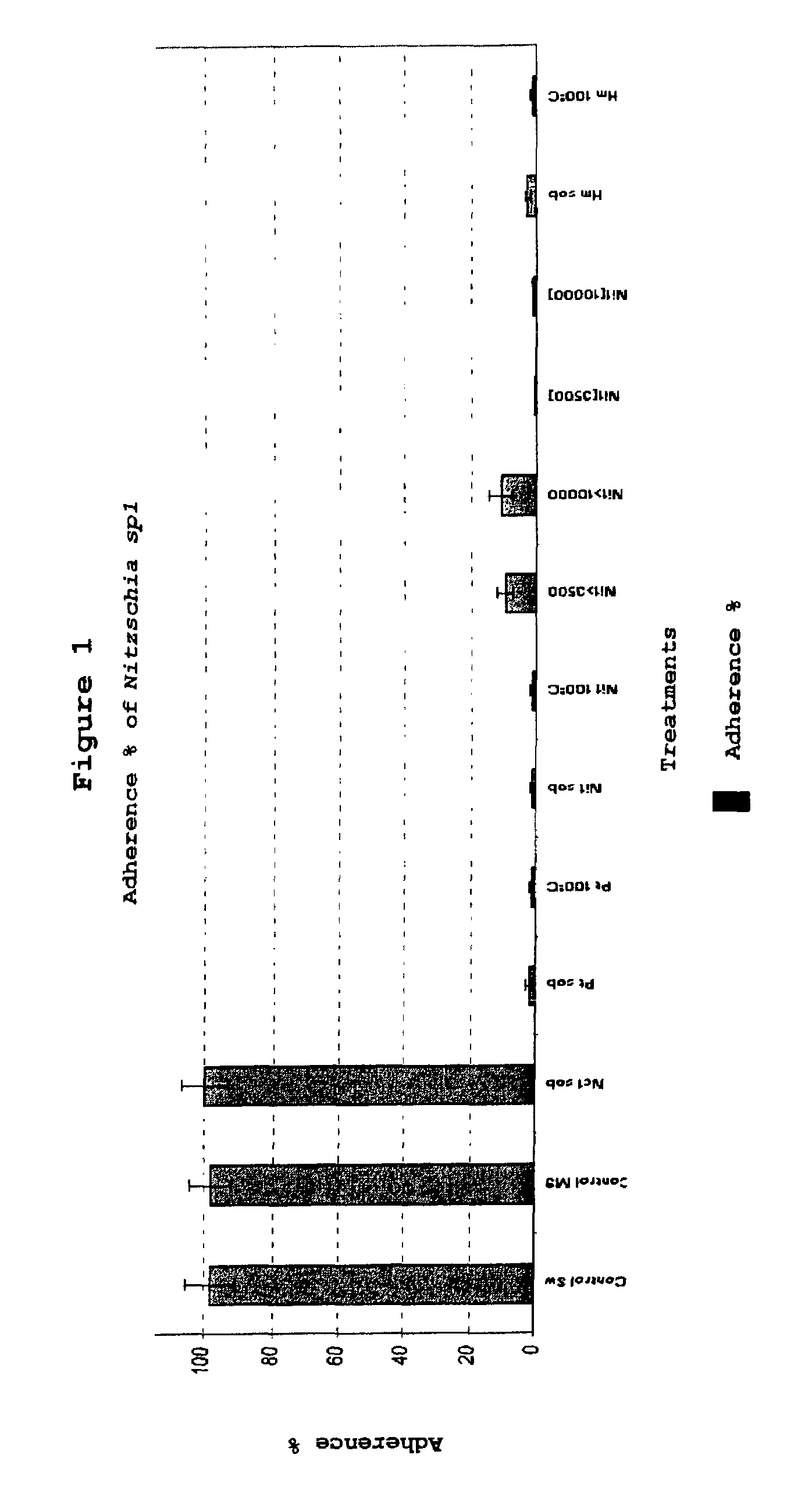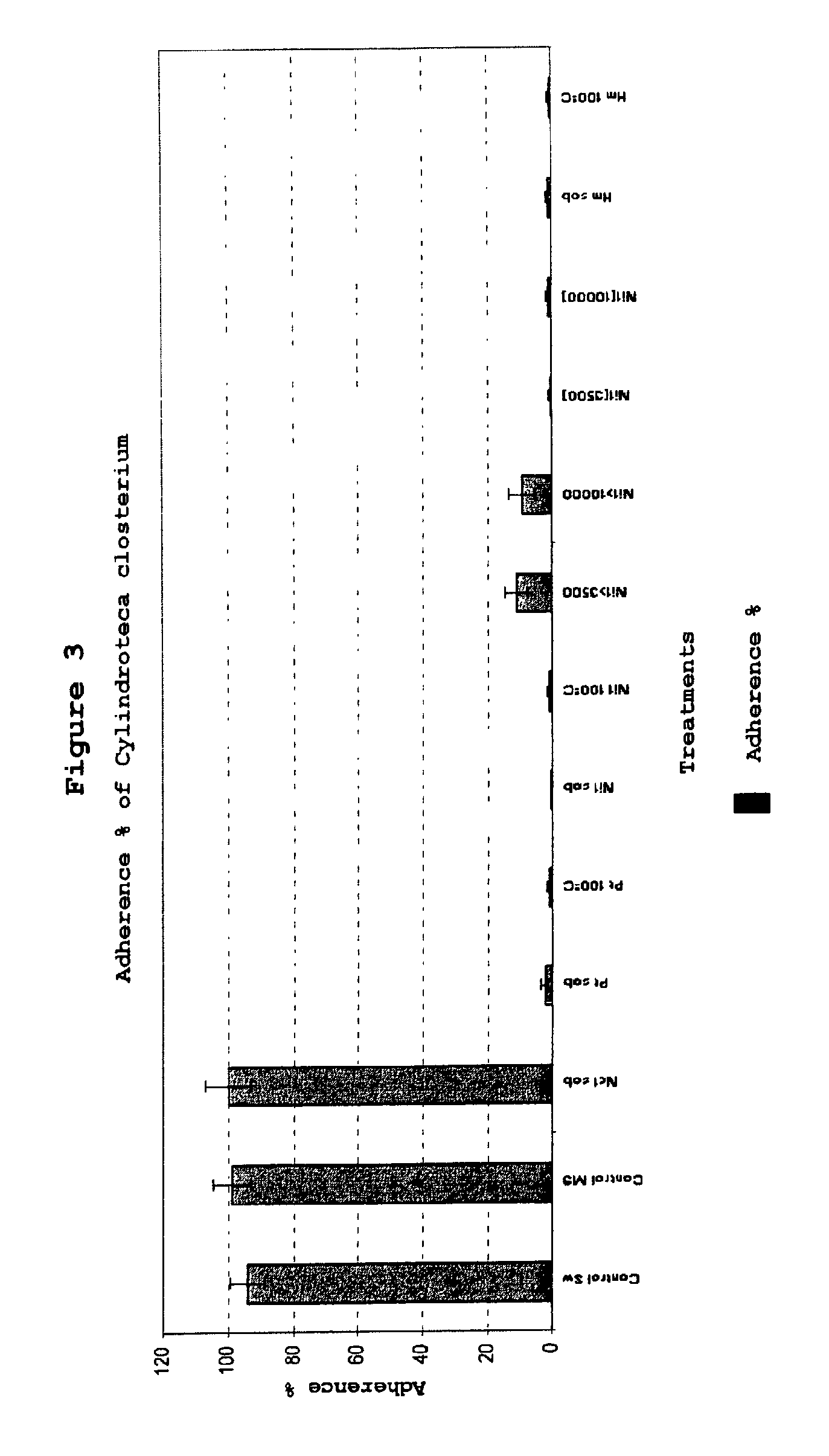Bacterial product from marine origin, useful for preventing the macro and micro biofouling caused by macroalgae and marine invertebrates
a technology of marine bacteria and products, applied in the field of marine bacterial products, can solve the problems of high cost of aquaculture companies, drastic decrease of concentration, and high cost of maintaining culturing materials
- Summary
- Abstract
- Description
- Claims
- Application Information
AI Technical Summary
Benefits of technology
Problems solved by technology
Method used
Image
Examples
Embodiment Construction
[0019]The following experimental protocols, describe the preferred embodiments of the invention, and should not be considered as limiting the scope of the present invention.
[0020]On the other hand, a skill in the art should be able of carrying out the appropriate modifications, or to use alternative techniques, which are known in the state of the art, for carrying out the experiments with the same final objective of the invention.
[0021]In the present invention, the term “SSM”, means a Marine Saline Solution, which corresponds to solution comprising a mixture of NaCl, KCl and MgSO4 en a proportion of 24:1:8, dissolved in a volume of distilled water (1 L), with a pH value of 7.0, and autoclaved.
[0022]In the present invention, the term “Sw”, means “Sea water”, comprised of sea water which is submitted to a filtration through 0.45 μm and which subsequently is autoclaved.
Experimental use of the Extra-Cellular Bioactive Substances of Marine Bacteria in the Laboratory
[0023]Isolation of mar...
PUM
 Login to View More
Login to View More Abstract
Description
Claims
Application Information
 Login to View More
Login to View More - R&D
- Intellectual Property
- Life Sciences
- Materials
- Tech Scout
- Unparalleled Data Quality
- Higher Quality Content
- 60% Fewer Hallucinations
Browse by: Latest US Patents, China's latest patents, Technical Efficacy Thesaurus, Application Domain, Technology Topic, Popular Technical Reports.
© 2025 PatSnap. All rights reserved.Legal|Privacy policy|Modern Slavery Act Transparency Statement|Sitemap|About US| Contact US: help@patsnap.com



